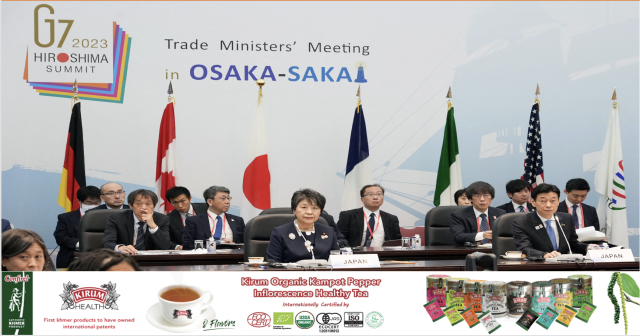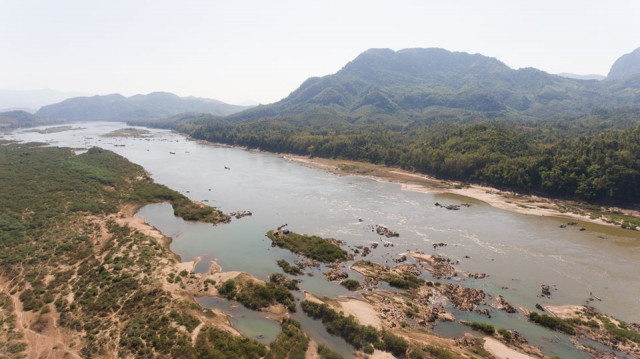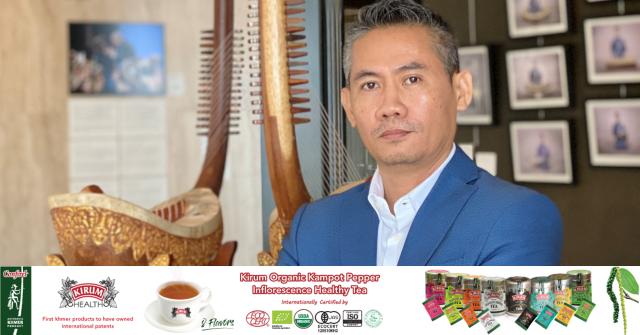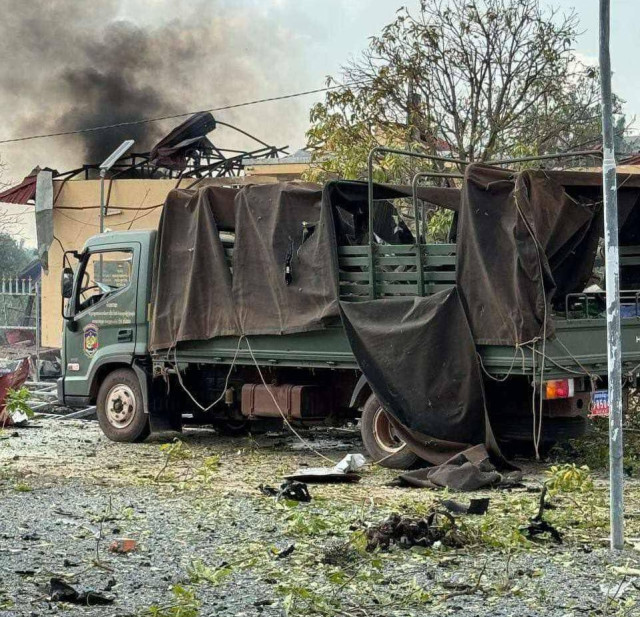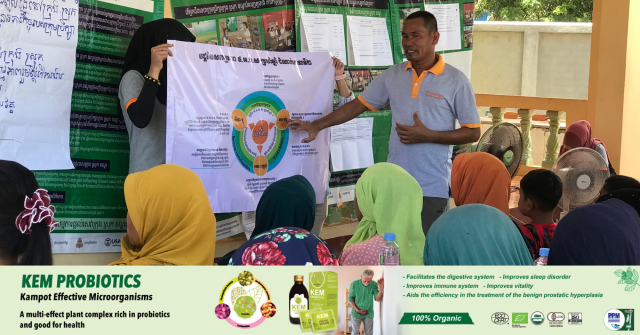Students Explore New Method to Farm Rice During Dry Season
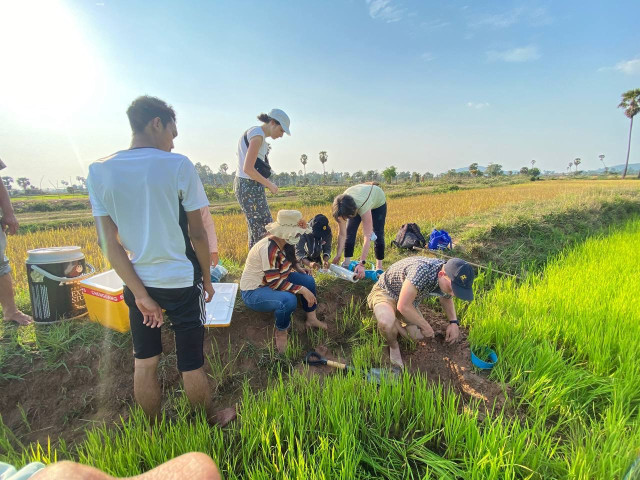
- By Chhum Chantha
- May 25, 2023 10:55 AM
PHNOM PENH – Cambodian and foreign students are studying ways to implement a new water-saving technique that can allow farmers to grow rice in the dry season when water is scarce.
To do so, they have focused on a technique called “Alternate wetting and drying (AWD)”, which is already used in other Southeast Asian nations like the Philippines.
It consists of alternating periods of floods and periods of surface droughts to save as much water as possible in the rice-growing process.
Following AWD’s principles, farmers no longer flood their fields over a prolonged period of time. Instead, they cover their crops with water once every five days, and wait for the water to drop 15 centimeters below the surface before re-watering.
Thanks to several 30-centimeter pipes – made from PVC or bamboo – planted into the rice field’s ground, the soil’s moisture is always monitored and maintained, to ensure that the rice is hydrated enough to grow.
If applied properly, AWD can reduce water consumption by 25 to 30 percent compared to the permanent flooding of rice fields, which is still the most used technique in many rice-producing countries.
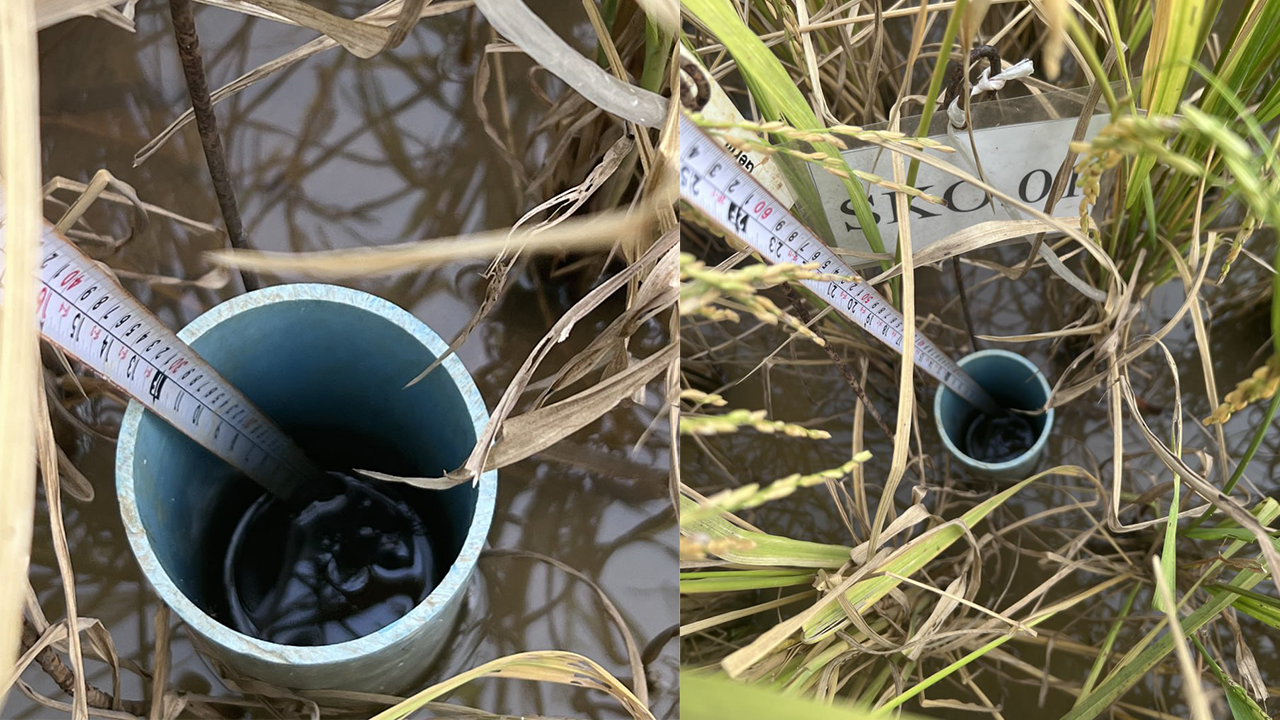 30-centimeter pipes – made from PVC or bamboo – planted into the rice field’s ground. Photo provided
30-centimeter pipes – made from PVC or bamboo – planted into the rice field’s ground. Photo provided
In Cambodia, such a farming method could open the gate to larger-scale rice production during the dry season, which remains low compared to rainy season crops. It can also become a new way for farmers to improve their livelihoods.
Ket Pinnara, a professor from the Faculty of Hydrology of the Institute of Technology of Cambodia and the leader of the research project, said AWD mostly focuses on how to improve water management.
In addition to alternate cycles of floods and surface droughts, the study uses charcoal or burnt husks as a cover displayed on the ground to preserve soil moisture.
Researchers also tried to mostly use natural fertilizers to help increase yields while preventing chemicals from deeply penetrating into the ground.
According to their preliminary results, the technique has reduced water consumption by 24 to 30 percent in the studied areas compared to traditional irrigation, Pinnara said.
The research kicked off in 2020 and is being conducted in Kampong Thom province’s Santuk district by the Cambodian Agricultural Research and Development Institute.
 Ket Pinnara is a professor from the Faculty of Hydrology of the Institute of Technology of Cambodia and the leader of the research project. Photo provided
Ket Pinnara is a professor from the Faculty of Hydrology of the Institute of Technology of Cambodia and the leader of the research project. Photo provided
It will be completed before the end of 2023 and, if the final results are successful, the project will then be implemented in other provinces and areas where water is lacking, said Lai Chenda, a Ph.D. student involved in the study.
She added that the first and second experiments showed that some rice varieties were less fruitful with the AWD technique than those planted using traditional methods.
Nevertheless, other varieties like OM 54, OM 51, Phka Rumduol and Sen Kraob provide higher yields from water-saving techniques.
Technology-assisted agriculture
To better monitor their study, researchers have used drones to collect data on soil moisture and the speed at which rice is growing, comparing it to traditional growing practices.
They also created an app so that farmers could enter data on the type of soil and rice varieties they planted. The app’s special features will inform them about when to water their fields or to apply fertilizers – ideally organic.
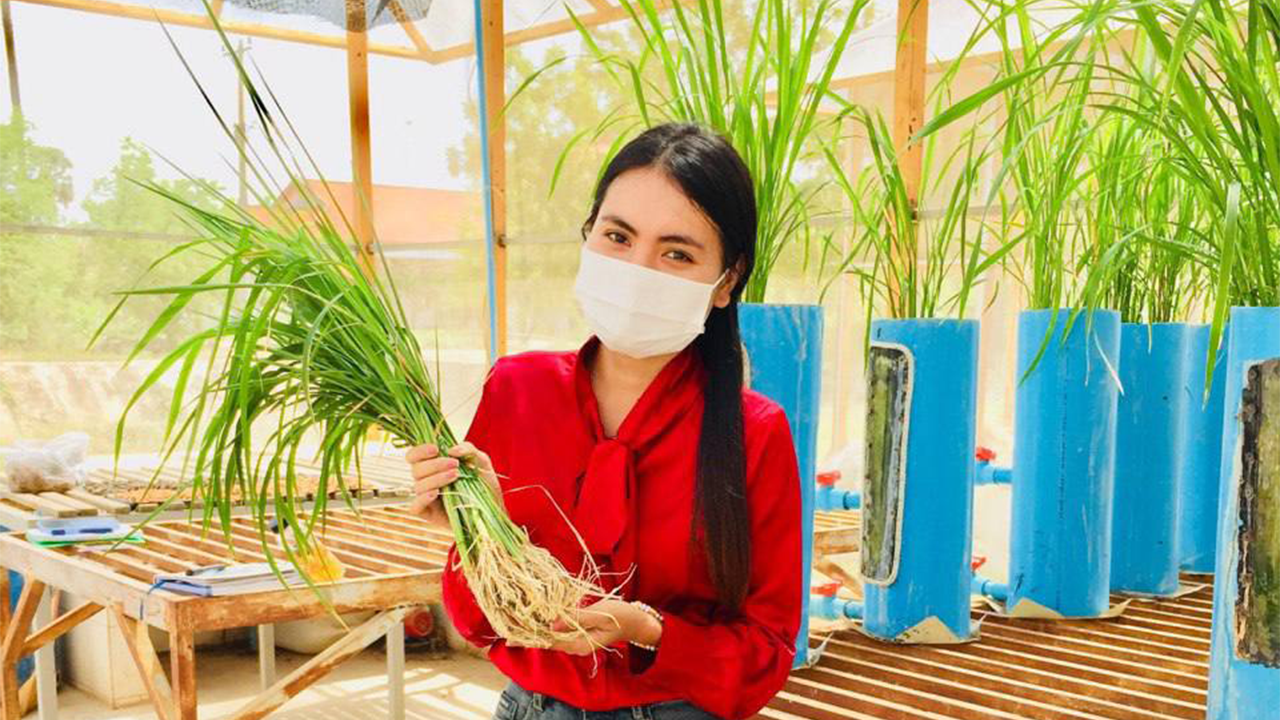 Lai Chenda is a Ph.D. student involved in the study. Photo provided
Lai Chenda is a Ph.D. student involved in the study. Photo provided
Developing technology-assisted agriculture in the country’s provinces could help sustain Cambodia’s food sovereignty, while the onset of the dry season usually means lower rice production in the country.
It can also lower production costs. As for now, when water is lacking, farmers often end up paying to transport water to their fields or buying gasoline to pump water from the ground.
Finding new farming techniques can thus be beneficial to their wallets.
“It is good for those who live in areas where water is scarce,” Chenda said, adding that it doesn’t require big investments from farmers to set up this new technique.
The study is the 20th sub-project of a larger batch of studies focusing on water-saving irrigation techniques and is led by the researchers of the soil laboratory of the Institute of Technology of Cambodia funded by the Ministry of Education, Youth and Sports.
In addition to Cambodian researchers, it involves six Master’s students from Liege University-AgroBioTech in Belgium.







